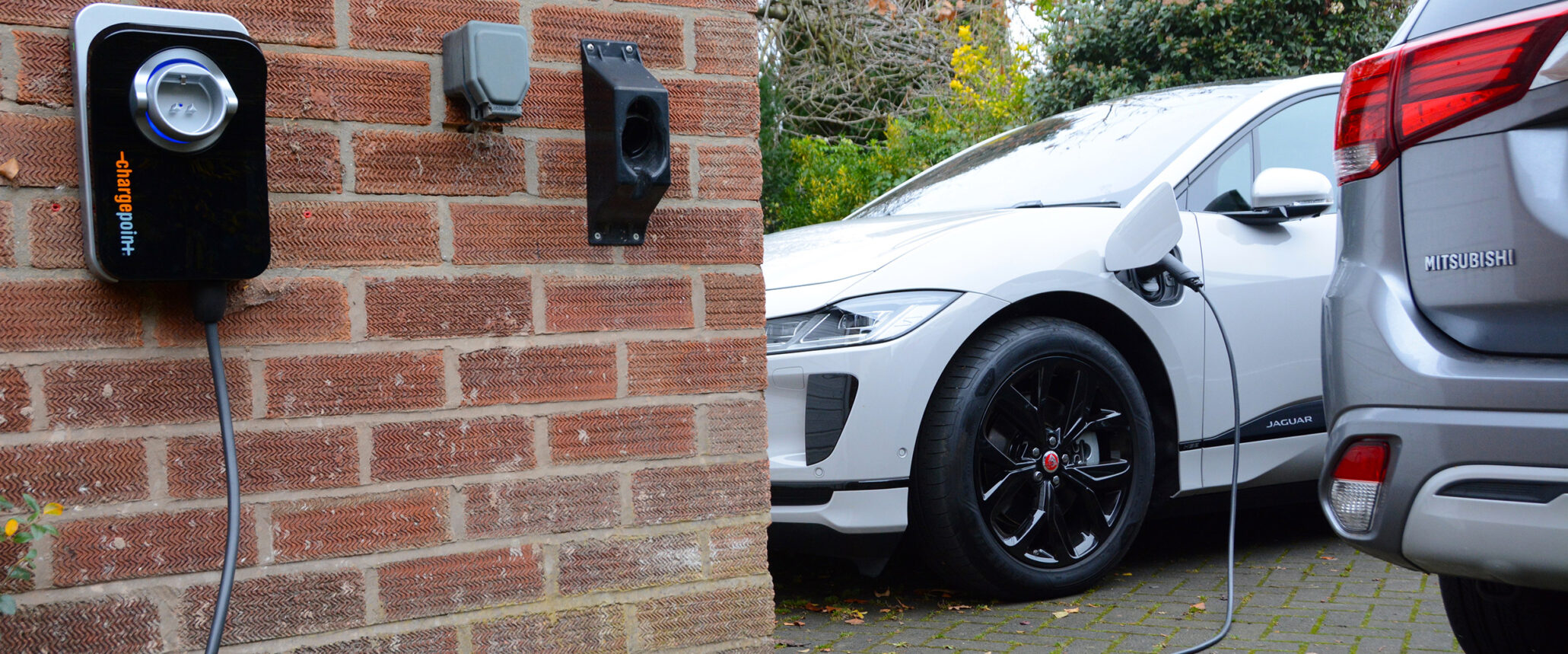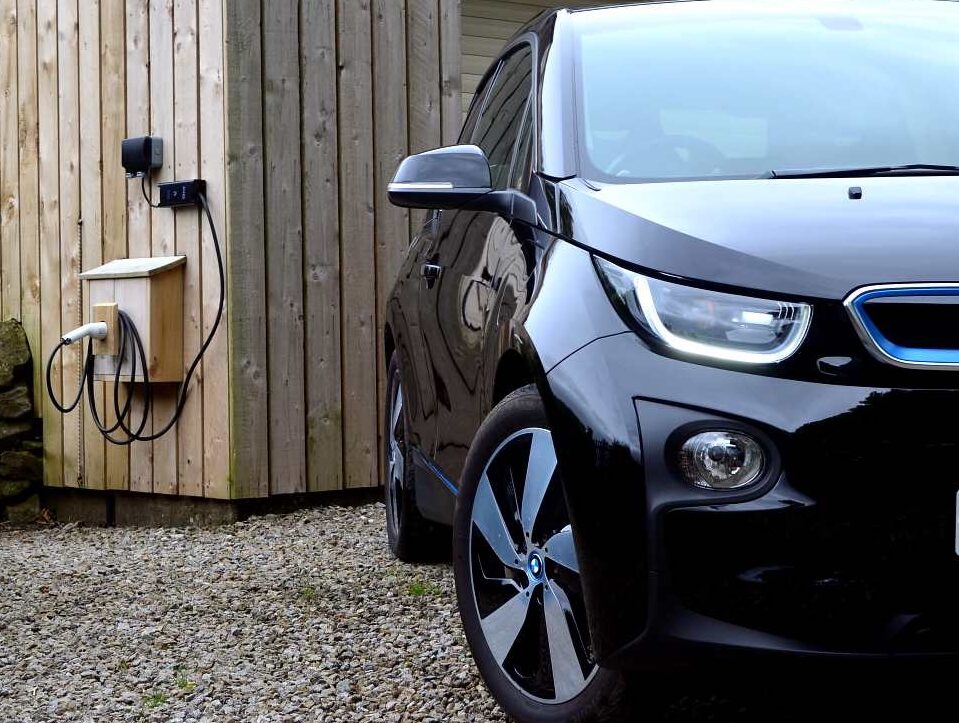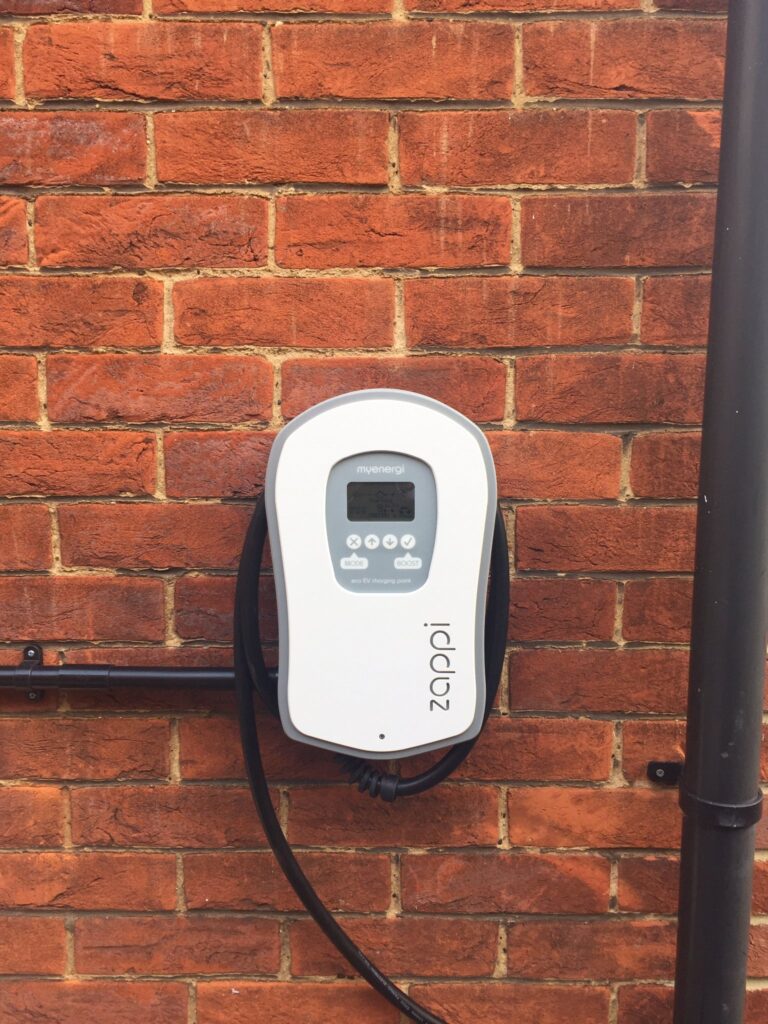

This post was originally published on the Electric Vehicle Consumer Code website on 27 May 2021.
Written by: Christina Hink, Operations Manager at EVA England
Do you have a petrol pump installed in your garage? For most people, the answer is probably a big ‘no’. Instead, most of us are accustomed to visiting petrol stations to refuel. It has been the primary means by which drivers have been refuelling their vehicles for over 100 years – but this is set to rapidly change.
More and more drivers are making the electric switch. To make the electric transition smoother, most drivers will have a home charger installed. A home charger can make charging an EV as easy, if not easier, than refuelling at a petrol station.
If you’re the proud driver of a Battery Electric Vehicle (BEV) or a plug-in hybrid vehicle (PHEV), or contemplating becoming one, you will probably want to be able to charge at home. Charging at home is cheap, easy and convenient. It takes around ten seconds to plug in, and costs around 1-3p per electric mile on average.
What are some of the things to know about home chargers and charging at home? Read on for eight things to know about charging at home brought to you by Electric Vehicle Association (EVA) England.
1. A home charger is technically called “Electric Vehicle Supply Equipment.”
If you’re feeling fancy, a home charger is called “electric vehicle supply equipment” (EVSE for short). Most people will refer to it as a home charger, home chargepoint or smart charger. A home charger is a compact, weatherproof unit mounted to a wall in your garage or outside your house by a qualified electrician. It can also come in the form of a smart charging cable where no wallbox is needed.
A home charger is both weatherproof and waterproof meaning it can be installed either inside or outside. You’ll want to have your home charger installed wherever is most convenient and close to where you park your EV.
There is a range of home chargers on the UK market, each with different features to suit different drivers’ needs (and price ranges). Home chargers can come in 3kW or 7kW speeds (or even 22kW if you have a three-phase electricity supply). They can be tethered (with an attached cable) or untethered (without an attached cable). You can also get them in different styles, from utilitarian modern designs to timeless wood panelling finishes.
There are several things to consider when having a home charger installed, such as charging speeds, locations, and the rating of your electrical connection. A good installer will guide you through the process. They’ll probably also make some of the critical decisions for you after performing a site survey of your home and where you want your home chargepoint installed.
A qualified electrician will need to consider and should advise on whether the location is suitable and whether you’ll need permission to install it (in most cases, you will not need permission). They can also assess whether your electricity supply can handle charging your EV on top of your existing electricity load – this is called a maximum demand assessment. If your electricity supply needs an upgrade, it is possible to contact your local Distribution Network Operator (DNO) and request an increase in capacity. This can monetarily set you back quite a bit, although some DNOs have committed to covering the costs.
2. You’ll need off-street parking to have a home charger installed.
If you have access to off-street parking, such as a private driveway or garage, then chances are you can have a home chargepoint installed. Having access to off-street parking also means you can qualify for the OZEV grant (more on that below).
If you don’t have off-street parking, then using public EV chargepoints in your area is probably your best bet. You can top-up throughout the week in places you already frequent – at the shop, the gym, or a restaurant, for instance – or on the street where you park your car. You may be paying more than you would if you were charging at home, but it is still less expensive than filling up the petrol tank in most cases.
If you drive to work and your company offers EV charging, then workplace charging is an easy way to recharge your vehicle. You may also be able to speak to your local Council about whether they can install more on-street chargepoints in your area. Through the On-street Residential Chargepoint Scheme (ORCS), local authorities can apply for grants (and this money is rarely spent).

3. There is a grant for installing a home charger – but time is running out.
A home chargepoint typically costs around £800 – £1000 (including installation) before the Office for Zero Emission Vehicle (OZEV) grant, which contributes up to £350 toward the cost of a home charger. The cost of installing a home charger will also vary based on individual installation locations and needs, as well as the specifications of the unit itself.
There are four requirements to qualify for OZEV’s Electric Vehicle Homecharge Scheme (EVHS). You will need to:
All you must do is meet the above requirements, provide your installer with some paperwork, and your installer will claim the grant on your behalf. And voilà! A discounted home charger.
However, the Homecharge Scheme is set to end in March 2022 as Government redirects funding and focuses on less developed sections of the charging sector.
4. Home chargers are convenient and safe.
So, why choose a home charger? Charging overnight with a dedicated home chargepoint is a convenient way to ensure you wake up to a charged vehicle ready to take you on your next adventure. More importantly, home chargers are the safest way to charge your car at home.
It is possible to charge your vehicle at home with a standard domestic socket and three-pin plug. However, the ageing wiring and old outlets in UK homes may not be able to handle the demand of charging your vehicle overnight. Prolonged and regular use of a three-pin plug increases the risk of fire to your property.
It’s probably also worth mentioning that your car will only ever draw a maximum charge of 2.6kW from a standard domestic socket. That’s too slow to add significant mileage to most models in a reasonable amount of time, even if left overnight.
For instance, it would take upwards of 13 hours to charge a 40kWh Nissan LEAF from 0-80%. A 90kWh Jaguar i-Pace would take over 30 hours to charge from 0-80%.
On the other hand, a home charger can deliver charging speeds between 3kW and 7kW and some are even capable of automatically reducing power if your demand is too much. Not only can you recharge your vehicle up to 3 times faster with a home charger, but you’re also protected against electrical faults and fires.
5. You don’t need to be a night owl to charge at night.
Most drivers will charge overnight not only because it is convenient but because it can save money. Charging during off-peak times when energy demand is lowest (typically from midnight to 7am) can save you hundreds of pounds a year. Charging overnight also happens to be when the grid uses cleaner energy sources, such as offshore and onshore wind. In fact, you may be using up to 25% less carbon if you charge overnight.
You don’t have to stay up until midnight to plug your vehicle in during off-peak times – a smart charger and some electric cars will allow the driver to set charging schedules. Smart chargers communicate remotely through your home Wi-Fi or ethernet. In addition to allowing you to set a charging schedule, some can also track energy consumption and mileage, connect to the grid when it’s cleanest, connect to your home’s solar panels and much more.
How you set your charging schedule will depend on the specific make of smart charger. So, if you’re in the market for a home charger and saving money is important to you, as well as using greener forms of energy, then you may want to consider the different smart features available to you.
Smart charging connects an EV to a charger through a data connection. That charger is also connected to a charging operator through another data connection. This allows for the charging operator to remotely monitor, manage and restrict energy consumption. It means a smart home charger will communicate with your chargepoint’s operator through either your WIFI, an ethernet cable or a SIM card.
It’s also important to note that to qualify for the OZEV grant, your home charger needs to be smart. Not to fret though, most new home chargers will be smart capable.
6. Home charging is for people who like routines – and for those who don’t
A quick, non-scientific study of the EVA England Board of Directors, all of whom are EV drivers, revealed that 50% of drivers have a charging routine and 50% do not. That is, half of our Board try to stick to a charging schedule, and half charge their vehicles when necessary.
As mentioned above, a home charger and even some vehicles can set charging schedules for you, which means the heavy lifting is handled. Gwynneth, EVA England’s Finance Director, tries to stick to a routine as much as possible. Warren, on the other hand, prefers a more laissez-faire approach and charges whenever is needed or when he can use his solar panels to top-up the cars.
How you home charge will very much depend on your lifestyle and preference. You may choose to plug in whenever your car is idle or set your car to charge at night. You may charge your vehicle every day, a couple of times a week, or as needed.

7. Home chargers can be shared with other EV drivers.
I recently presented to a group of Ocean Grove, New Jersey residents on EV driving and charging in England. One of the participants asked, “Can my friend use my home charger?” The answer is “YES”.
If your friend’s EV uses the same type of connector as you, then it is as easy as plugging in a mobile phone. If not, and your home charger is untethered, they simply need to supply their own cable with the appropriate connector. If it is tethered with a different type of connector, then your friend may need an adapter (much like you would use on your phone when abroad, but car-sized).
You can even earn some extra cash from loaning out your home charger, as well as help other EV drivers in your area. Through the Co Charger smartphone app, you can register your home charger. You can also list its availability and the cost to charge using your charger. Once someone completes a charge using your home chargepoint, the app pays you for renting out your charger (minus a small fee). Pretty nifty, huh?
8. Even with a home charger, you’ll probably still use public charging.
Our recent survey on the consumer experience at public EV chargepoints revealed that 91% of drivers have access to off-street parking (a prerequisite for a home charger). However, 92% of drivers will still use public charging from time to time. Whether this is once a month or once a year, drivers still need to top-up their charge when on the go.
To locate public chargepoints, most drivers will use a website or app like Zap-Map. Our recent survey also showed that this is the case for somewhere around 83% of drivers. For longer journeys, we like A Better Route Planner (ABRP) – simply type in your starting point, and endpoint and ABRP will give you a route with scheduled stops at public chargepoints.
If charging away from home, recharging your car can and should fit into your everyday activities. There is an increasing number of EV chargers at destinations you probably already visit, such as supermarkets, gyms and leisure parks. With a bit of forward planning, you can factor charging into your regular outings.
Making the electric switch isn’t without its adjustments. Planning range for a journey in an EV is still necessary. It used to be the same case for petrol or diesel vehicles when petrol stations weren’t as abundant. With ever-increasing battery capacities and the ever-increasing public charging network, the need to carefully plan for a charge will become a thing of the past – and with a home charger, it pretty much already is.
Join EVA England
By becoming a member of EVA England, you are helping fund advocacy work which is keenly being listened to by Government and companies in the EV space. Members also receive a guide to EVs and EV charging, our etiquette guide, discounted products, and more as we continue to grow and develop. Membership costs £20/year.
EVA England members currently also enjoy £50 off their first subscription with Onto and more.
Find out more about EVA England.
Christina Hink, PhD, is the Operations Manager at EVA England. Having joined the EVA England Team in its early days, Christina has overseen its research outputs to date, crafted the Members’ Pack and is keen to ensure that every member feels supported along their electric journey.
EVCC has further guidance on home chargepoints for consumers. This guidance aims to help consumers ask the right questions of their installer before installing a home chargepoint.